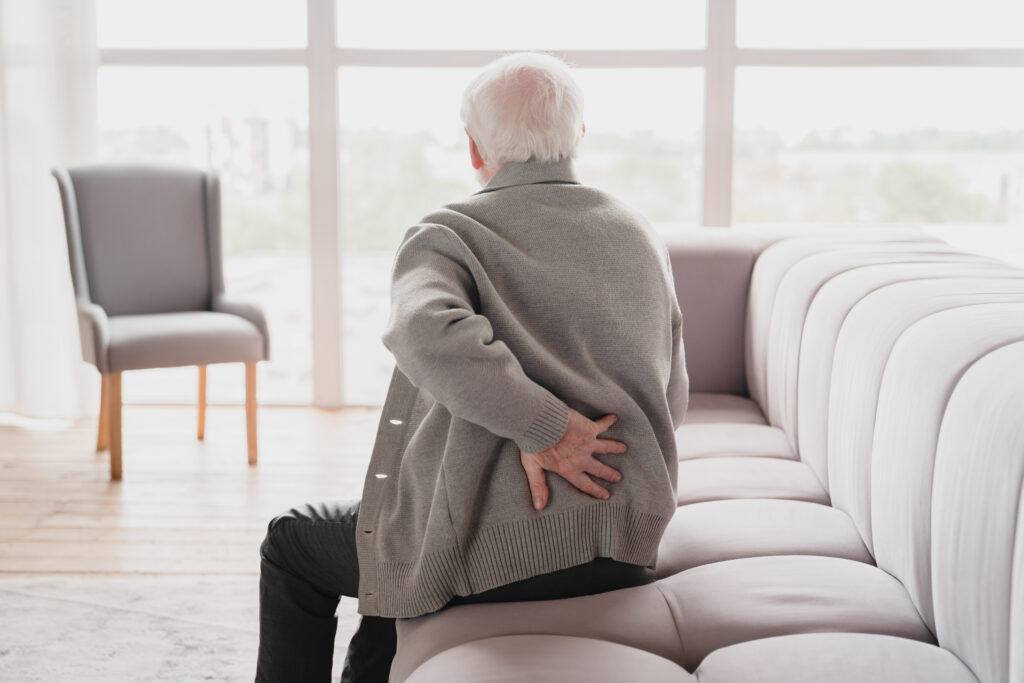
Healing Sciatica: Discover the Power of Physical Therapy
By: Dr. Abe Kopolovich, DPT, MBA

Sciatica is a common condition that affects many individuals, particularly those who lead sedentary lifestyles or have jobs that require prolonged periods of sitting. The condition is characterized by pain that radiates from the lower back, specifically the buttock/gluteal area, down to the legs, following the pathway of the sciatic nerve.
This condition is a very common complaint. About 40% of people in the U.S. experience sciatica sometime during their life. Back pain is the third most common reason people visit their healthcare provider.
Luckily, most people with sciatica get better with physical therapy and self-care treatments. Keep reading to learn more about this condition and how to treat it with the help of experts.
What Is Sciatica?
The sciatic nerve is the largest nerve in the body, running from the lower back through the hips and down each leg. Sciatica pain occurs when this nerve is compressed or irritated, resulting in symptoms such as sharp pain, tingling, numbness, and weakness.
People describe sciatica pain in different ways, depending on its cause. Some people describe the pain as sharp, shooting, or jolts of pain. Others describe this pain as “burning,” “electric” or “stabbing.”
The pain may be constant or may come and go. Also, the pain is usually more severe in your leg compared to your lower back.
Symptoms of Sciatica Pain
- Moderate to severe pain in the lower back, buttock, and down your leg.
- Numbness or weakness in your lower back, buttock, leg, or feet.
- Pain that worsens with movement; loss of movement.
- “Pins and needles” feeling in your legs, toes, or feet.
- Loss of bowel and bladder control (due to cauda equina).
What Causes Sciatica?

The causes of sciatica pain can vary, but some of the most common include:
- Herniated or bulging discs: This occurs when the cushioning between the vertebrae in the spine is damaged, causing the disc to protrude and compress the nerve.
- Spinal stenosis: This condition is characterized by the narrowing of the spinal canal, which can compress the sciatic nerve and cause pain.
- Piriformis syndrome: The piriformis muscle is located in the buttocks and can sometimes become tight or inflamed, causing pressure on the sciatic nerve.
- Spondylolisthesis: This condition occurs when one vertebra slips forward over another, causing pressure on the nerve.
- Trauma: Injuries to the lower back or hips can cause sciatica pain.
You are more at risk of suffering from sciatica if you…
- Have an injury/previous injury
- Are overweight
- Lack a strong core
- Have an active, physical job
- Lack of proper posture in the weight room
- Have diabetes
- Have osteoarthritis
- Lead an inactive lifestyle
- Smoke
How to Treat Sciatica with Physical Therapy?

While there are several treatment options for sciatica, physical therapy has been shown to be one of the most effective in reducing pain and improving mobility. Physical therapy for sciatica typically involves a combination of exercises, stretches, and manual therapy techniques.
Sciatica stretches are an important part of physical therapy for sciatica. These stretches help to improve flexibility and reduce tension in the muscles surrounding the sciatic nerve. Some of the best sciatica stretches include:
- Hamstring stretches: Tight hamstrings can contribute to sciatica pain, so stretching these muscles can help to alleviate symptoms. One effective hamstring stretch is the seated forward bend, in which you sit on the floor with your legs straight out in front of you and reach forward to touch your toes.
- Piriformis stretches: Tightness in the piriformis muscle can cause pressure on the sciatic nerve. A great exercise to combat this is the figure four stretch, in which you lie on your back with your knees bent and feet on the floor, cross one ankle over the opposite knee, and gently pull your knee towards your chest.
- Knee to chest stretch: This stretch helps to elongate the lower back muscles and reduce pressure on the sciatic nerve. To perform it, lie on your back with your knees bent, and pull one knee towards your chest while keeping the other foot on the ground.
- Hip flexor stretches: Tight hip flexors can contribute to lower back pain and sciatica. One thing you can do for this is the lunge stretch, in which you step forward with one foot and bend your knee, while keeping your other leg straight behind you. In addition to stretches, exercises for sciatica can also be helpful in relieving pain and improving mobility.
- Core strengthening exercises: A strong core can help to support the lower back and reduce pressure on the sciatic nerve. Exercises like planks and bird dogs are effective for strengthening the core.
- Aerobic exercises: Low-impact aerobic exercises like walking and swimming can help to improve circulation and reduce inflammation in the lower back and hips.
Any exercise program should be devised by an expert physical therapist, who’ll work with you to customize your stretching and aerobic exercise program and recommend other exercises to strengthen the muscles of your back, abdomen, and legs.
Physical therapy for sciatica may also include manual therapy techniques like massage and spinal manipulation. These techniques can help to improve circulation and reduce tension in the muscles surrounding the sciatic nerve.
With a good regimen and over-the-counter medicine, 80% to 90% of the people with sciatica get better without surgery, and about half of these recover from an episode fully within six weeks.
Here at Therapy In Motion, we want to help you live your best, pain-free life. Contact us today and book your appointment with Dr. Abe and his team!



